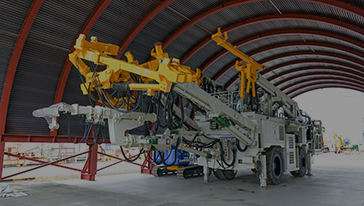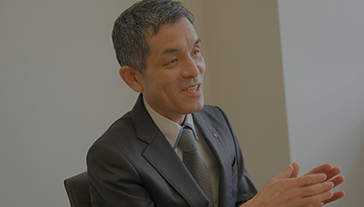
Tunnel Construction Professionals
Construction Robotics Division
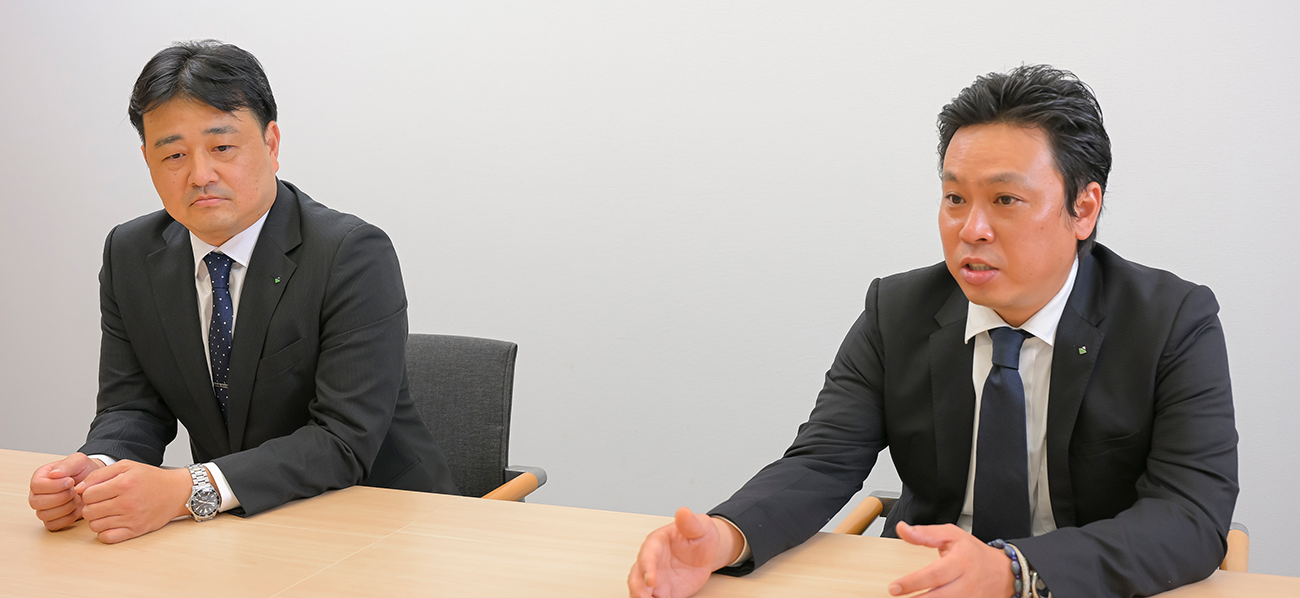
Manager, Construction Support Section,
Construction Engineering Department 1,
Construction Robotics DivisionTetsuo HATORI
Deputy Manager, Civil Engineering Machinery Section,
Construction Technical Department,
East Japan Robotics CenterMichihiro KAKIZAKI
“Construction support based on years of on-site experience”
Unforgettable experiences at tunnel sites
HATORI:
I have worked at construction sites for about 20 years out of my 23 year career. In April 2022, I was assigned to the construction support section as a section manager. Now I consult with employees working on site and provide support for sales. Since I have enough experience to understand the feelings and positions of on-site employees, I hope to firmly support them in dealing with various issues.
KAKIZAKI:
This is my 15th year with Obayashi, and I have worked on the sites of both shield tunnels and tunnels in mountain areas. My experience has been useful at East Japan Robotics Center, where I currently make predictions of what might happen on site and come up with construction plans. I feel close to the employees on site and I want to work with them as a team to make the project a success.
HATORI:
On my second year with Obayashi, I worked at a shield tunnel site for the first time. During construction, we encountered an unexpected underground obstacle and I wondered what could be done. My seniors used the freezing method, which freezes soil and sand to solidify the underground and remove the obstacle. Although freezing methods are sometimes planned in advance, they are rarely implemented suddenly. It was about 20 years ago, but I still remember the bold decisions made by the seniors at the time. Later, after I had become somewhat experienced, I encountered a trouble of the rear part of the shield machine damaged during excavation, seeing water rushing out and flooding half of the tunnel. Although I was in a hurry with the unexpected situation, I could calmly halt the construction work, first ensuring safety and then taking actions to restore the tunnel, which was eventually completed without further troubles. I believe I could handle the problem because of my experience 20 years ago.
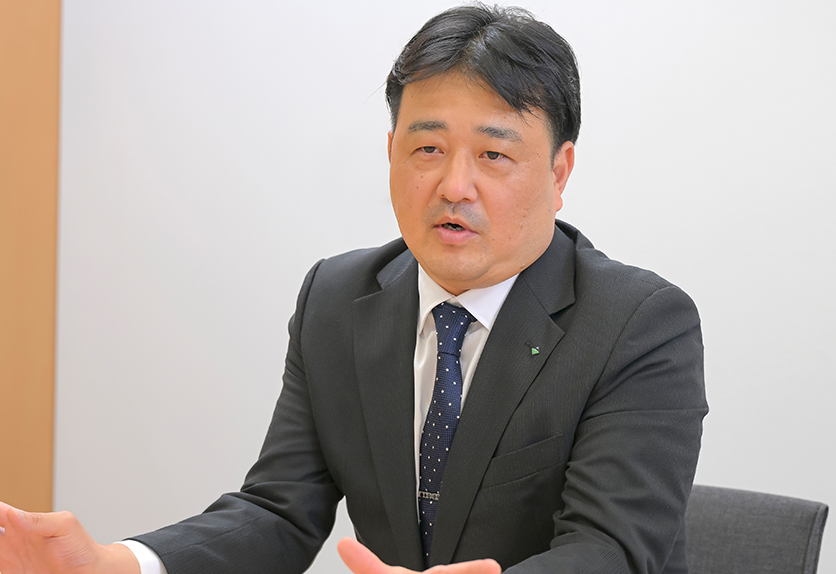
Tetsuo HATORI, Manager, Construction Support Section,
Construction Engineering Department 1, Construction Robotics Division
KAKIZAKI:
It was in my seventh year with Obayashi when I first worked at a shield tunnel construction site. I was very nervous with no experience in shield tunnels. So, at the end of the excavation when the crane lifted the last piece of the shield machine and I saw Tokyo Tower at night in the background, I almost cried. There still was a lot of work to be done with great care, but I felt a sense of accomplishment and relief when I reached a point of closure.
To keep the construction going
HATORI:
For any tunnel construction, the common goal is to excavate toward the final destination. Making progress, even in small steps, is what makes tunneling rewarding. Since shield tunnels are relatively long, there is a special sense of accomplishment when you reach the end safely.
KAKIZAKI:
In shield tunneling, since the operator enters the shield machine and bores the tunnel, the condition of the soil is not visible with the naked eye. So, the soil pressure and oil quantity are measured using instruments attached to the machine.
HATORI:
Tunnel construction involves many people and machines, and suspension of projects incur financial loss, so we all try to avoid such a situation. But at times, we realize that the machine will break down if we proceed with excavation any further. Then we stop the work but try to restore it as quickly as possible.
KAKIZAKI:
I hope the corporate culture that strives to keep tunnel construction moving will be passed down to future generations. Of course, there are times when staff on site cannot determine whether or not the suspension of construction is appropriate and we at the robotics center may provide support at headquarters. The center also has experienced field staff, so we can provide support from on-site perspective even in case of trouble.
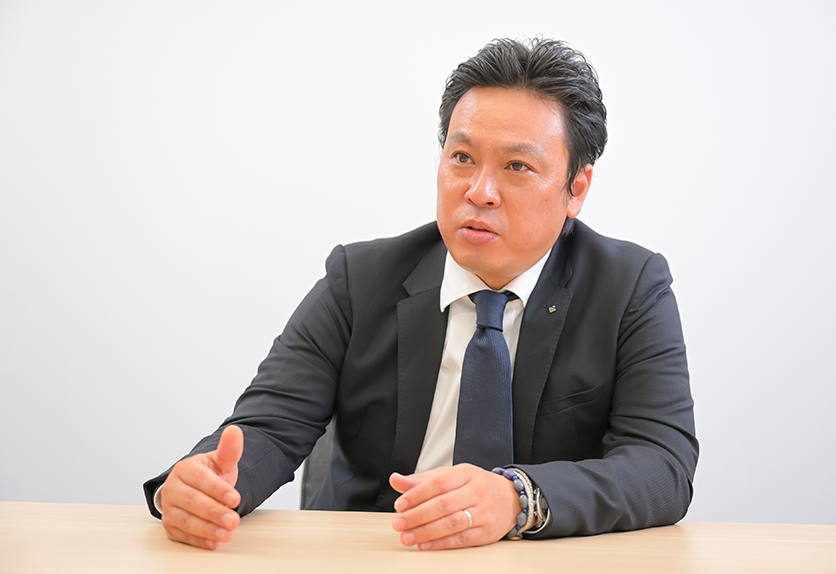
Michihiro KAKIZAKI, Deputy Manager, Civil Engineering Machinery Section,
Construction Technical Department, East Japan Robotics Center
Automation of shield tunnels and beyond
KAKIZAKI:
The construction industry is facing serious labor shortage and aging of skilled workers. Technologies such as AI will become indispensable to tackle those issues. At shield tunnels, remote and automated technologies are already in use and the Robotics Center is now aiming to promote autonomous construction.
HATORI:
Ideally, AI system would learn enough to work as deftly as skilled workers. But even with the advance of remote, automated and autonomous systems, we still need the wisdom and senses of the professionals at construction sites because they can detect troubles through intuition based on senses such as smell, hearing and touch. Also, daily communication with those workers helps in discovering problems. So, while technological progress of robotics is important, we would also value human connections and the five senses.
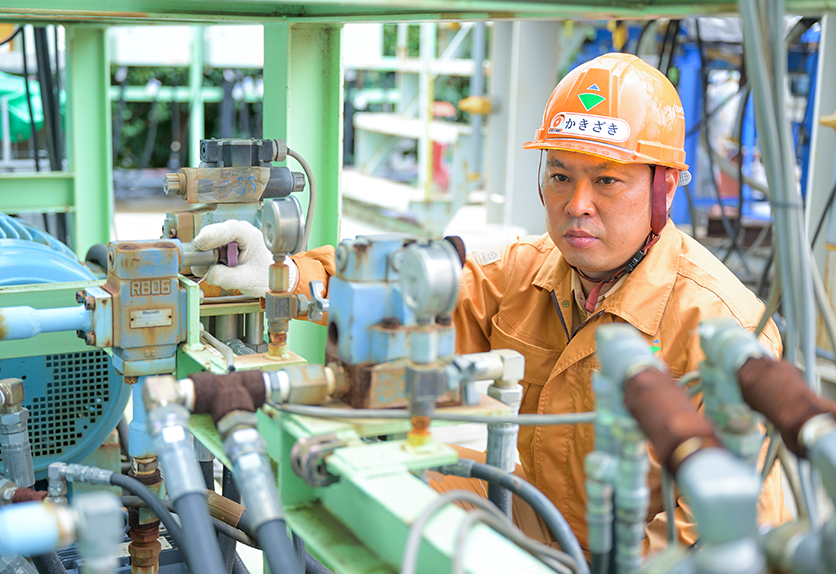
In the facility of Robotics Center
KAKIZAKI:
What hasn’t changed, and won’t change, is that we continue to create through robotics the norm, the taken-for-granted, of the construction sites. Having electricity running and shield machines working are the basis for construction sites, but that’s made possible with electrical and mechanical technologies. We will continue to smartly prepare the norm, that is, the environment where each and every construction project can proceed smoothly.
HATORI:
The tunnel construction can, at times, be extremely demanding work. As a member of the Construction Support Section, I hope to convey to juniors at the construction sites the appeal of being involved in such large-scale projects, and to alleviate their worries and anxieties. We will continue to put the highest priority on their support.

